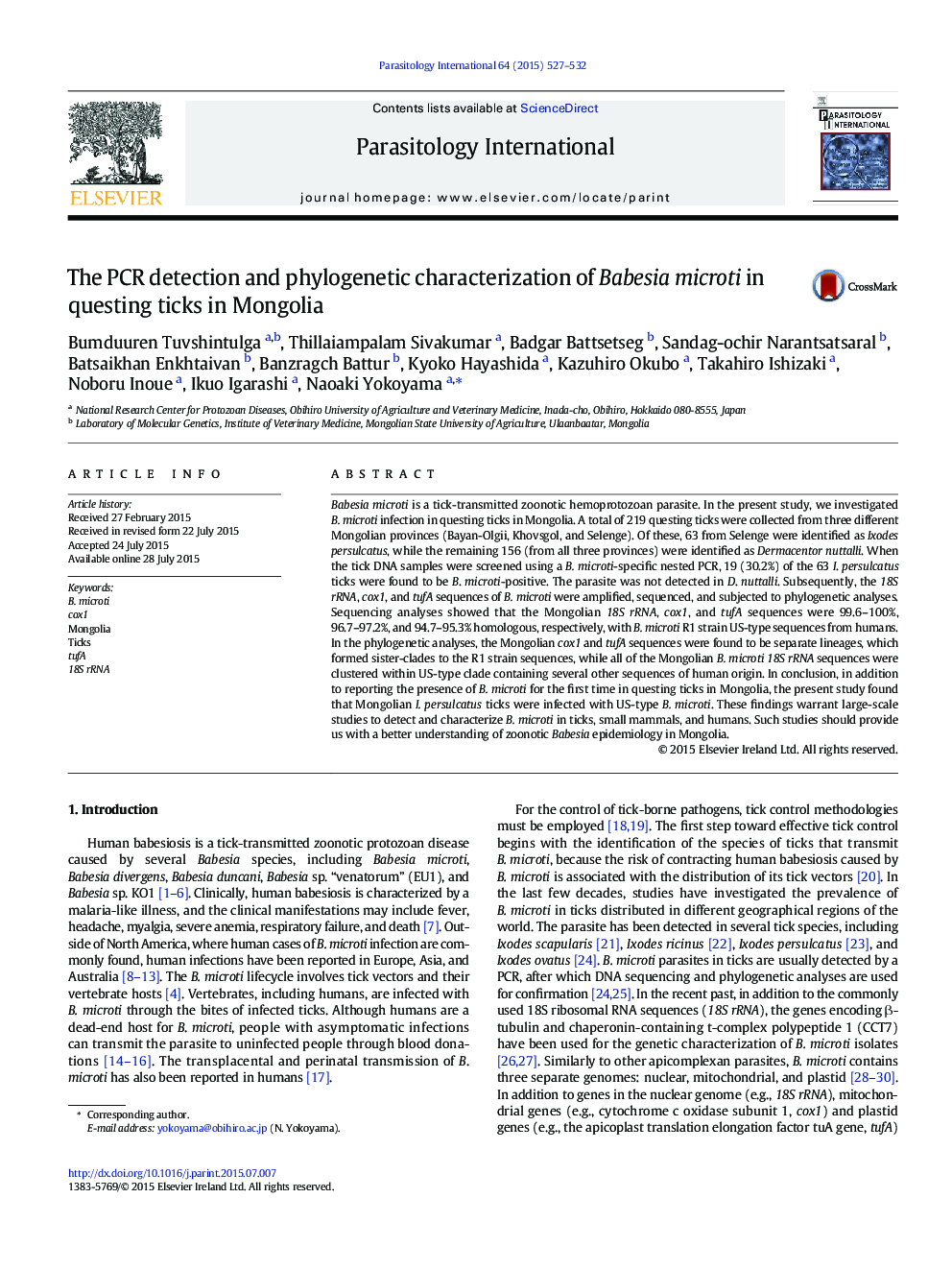| کد مقاله | کد نشریه | سال انتشار | مقاله انگلیسی | نسخه تمام متن |
|---|---|---|---|---|
| 3417772 | 1225471 | 2015 | 6 صفحه PDF | دانلود رایگان |

• We collected questing ticks from three different provinces in Mongolia.
• We detected Babesia microti from Ixodes persulcatus ticks.
• Mongolian B. microti sequences were clustered within US-type.
• The present study reported the first detection of B. microti from ticks in Mongolia.
• The present studies should provide us with better understanding of zoonotic Babesia epidemiology in Mongolia.
Babesia microti is a tick-transmitted zoonotic hemoprotozoan parasite. In the present study, we investigated B. microti infection in questing ticks in Mongolia. A total of 219 questing ticks were collected from three different Mongolian provinces (Bayan-Olgii, Khovsgol, and Selenge). Of these, 63 from Selenge were identified as Ixodes persulcatus, while the remaining 156 (from all three provinces) were identified as Dermacentor nuttalli. When the tick DNA samples were screened using a B. microti-specific nested PCR, 19 (30.2%) of the 63 I. persulcatus ticks were found to be B. microti-positive. The parasite was not detected in D. nuttalli. Subsequently, the 18S rRNA, cox1, and tufA sequences of B. microti were amplified, sequenced, and subjected to phylogenetic analyses. Sequencing analyses showed that the Mongolian 18S rRNA, cox1, and tufA sequences were 99.6–100%, 96.7–97.2%, and 94.7–95.3% homologous, respectively, with B. microti R1 strain US-type sequences from humans. In the phylogenetic analyses, the Mongolian cox1 and tufA sequences were found to be separate lineages, which formed sister-clades to the R1 strain sequences, while all of the Mongolian B. microti 18S rRNA sequences were clustered within US-type clade containing several other sequences of human origin. In conclusion, in addition to reporting the presence of B. microti for the first time in questing ticks in Mongolia, the present study found that Mongolian I. persulcatus ticks were infected with US-type B. microti. These findings warrant large-scale studies to detect and characterize B. microti in ticks, small mammals, and humans. Such studies should provide us with a better understanding of zoonotic Babesia epidemiology in Mongolia.
Phylogenetic tree based on B. microti 18S rRNA sequences.Figure optionsDownload as PowerPoint slide
Journal: Parasitology International - Volume 64, Issue 6, December 2015, Pages 527–532